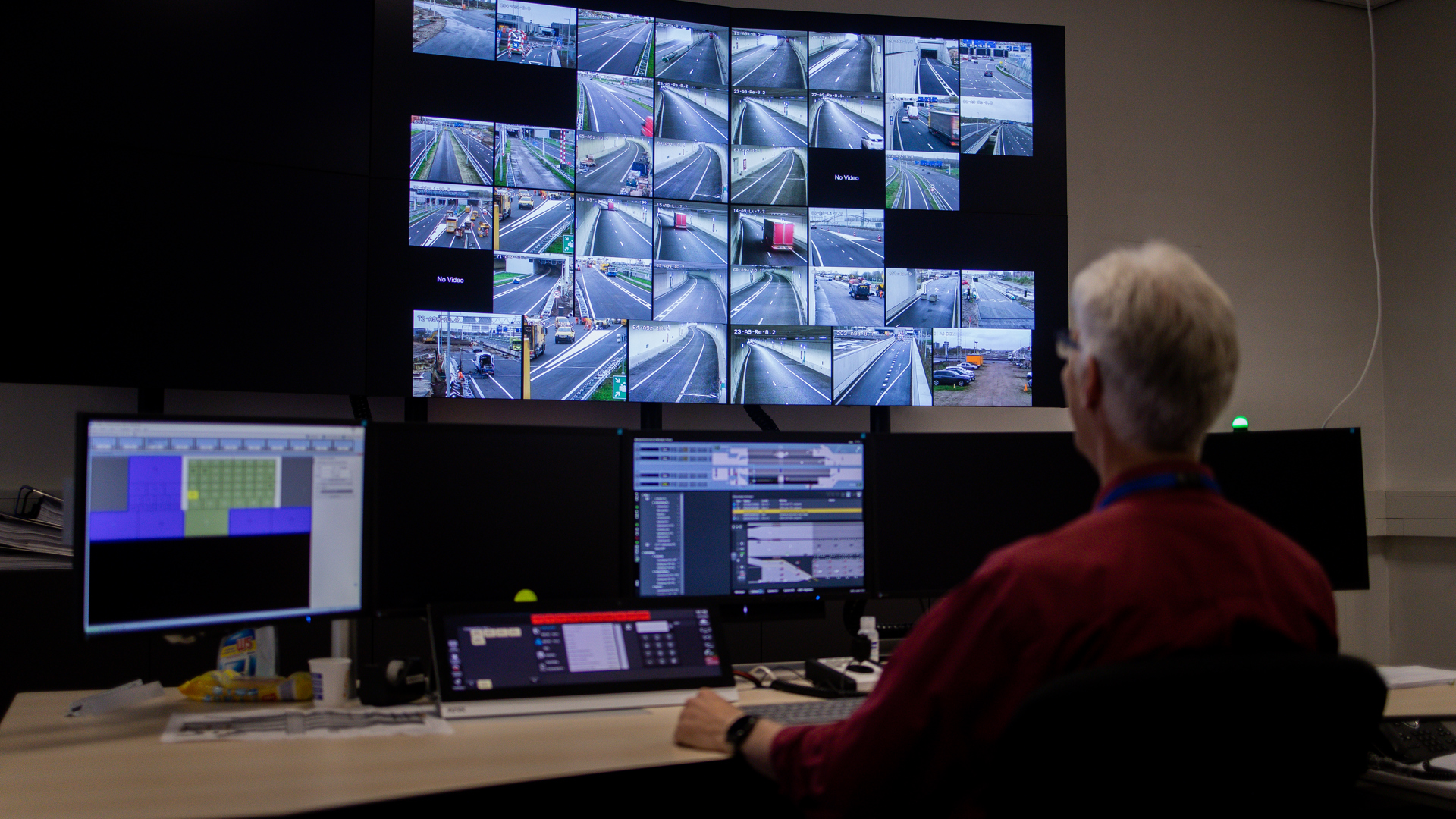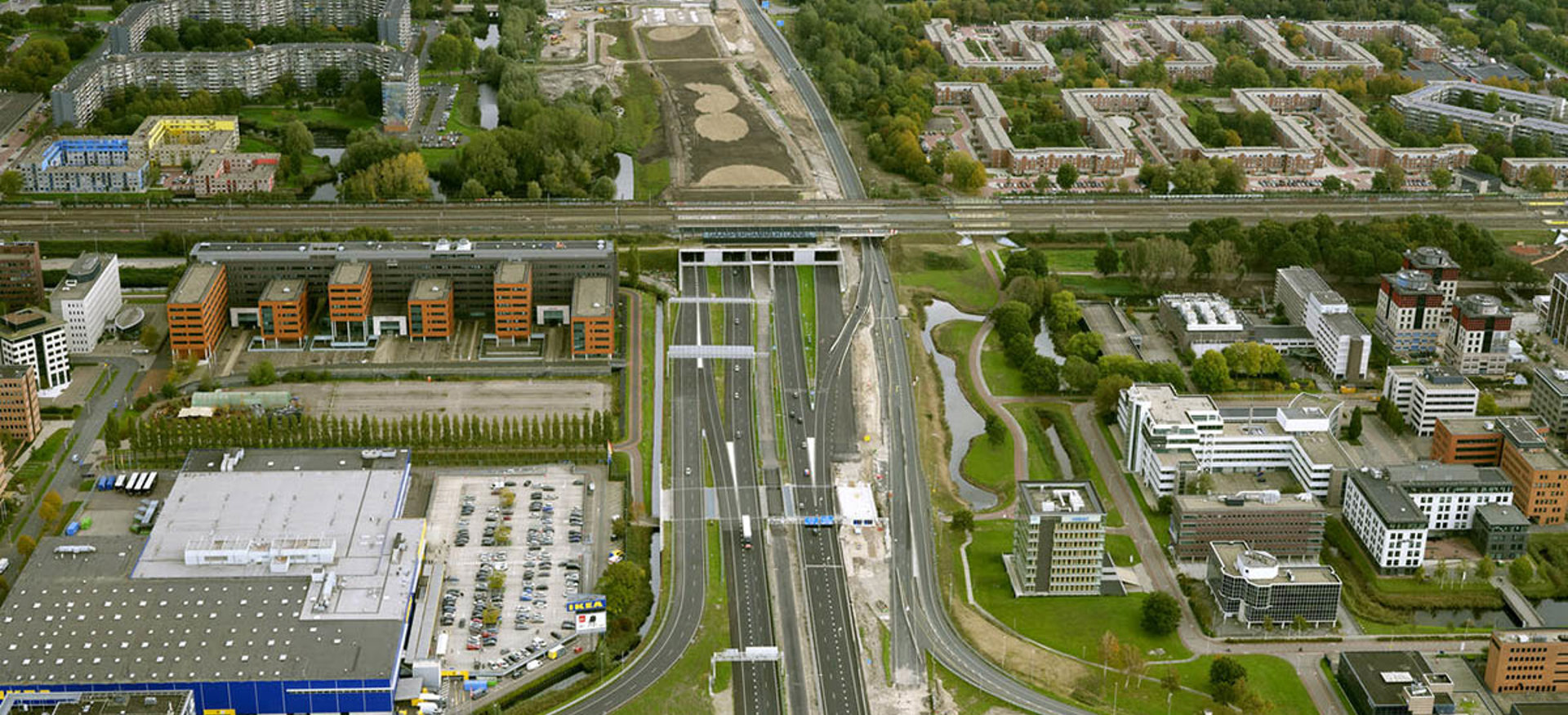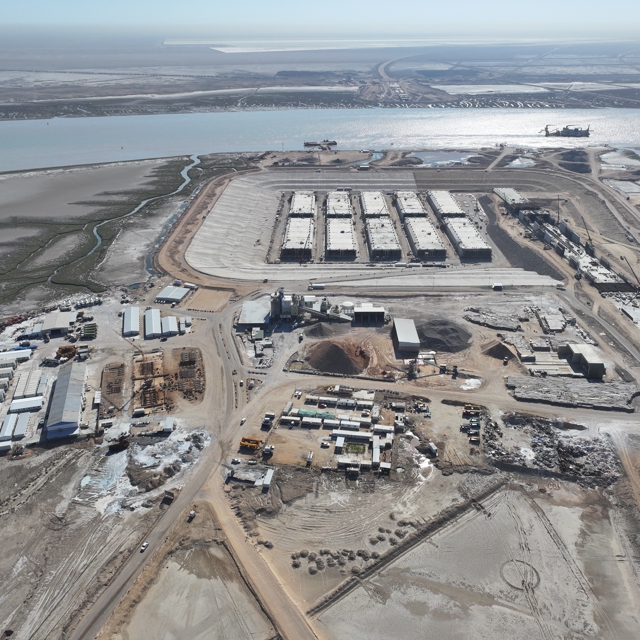The Gaasperdammertunnel must be able to act autonomously after completion
The longest land tunnel in the Netherlands: that' s the A9 Gaasperdammertunnel. Because this traffic link must also be able to act autonomously after completion, safety is of paramount importance.
All systems must provide the correct behavior in all cases.
Because this person is not physically present and the tunnel contains many systems, he or she is helped by automated systems. Many tens of thousands of signals have to be monitored and interpreted in real time so that the road traffic controller makes the right traffic decisions. You can think of taking speed-limiting measures, breakdown assistance or even closing the tunnel.
The right behaviour
The tunnel also exhibits autonomous behavior: in some cases it can already make predefined decisions based on signals. The right behavior Test manager Michel van Corven explains: "Although Ballast Nedam pays a lot of attention to the concrete work and the asphalt in the tunnel, the risks for our client lie much more in being able to operate the tunnel systems safely. For this, all systems must in all cases exhibit the correct behavior. From design to the end of the maintenance period, IXAS must continue to demonstrate this. In the past period, as a test manager, I worked with a team of specialists to demonstrate that the Gaasperdammertunnel shows the correct behavior. We have also resolved any remaining issues."
We can build in certainty, without the tunnel having to remain closed for years to come.
The switch track is the last step and will open when the A9 Badhoevedorp - Holendrecht project is completed. This project includes the road extension of the A9 at Ouderkerk aan de Amstel and Amstelveen and is an extension of the A9 Gaasperdammerweg. This project is expected to be completed in 2026. Both projects are part of the road expansion between Schiphol, Amsterdam and Almere.






